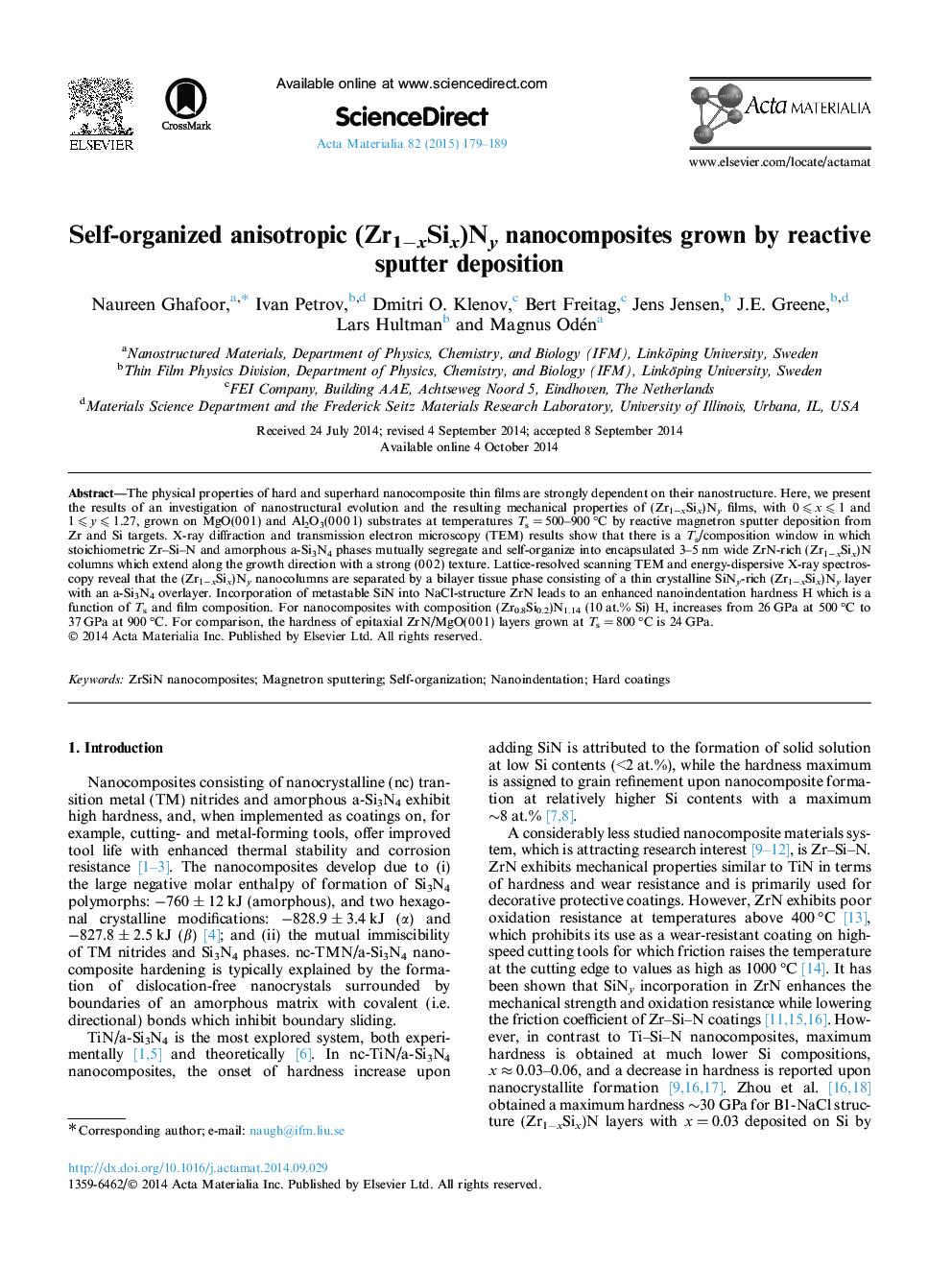| کد مقاله | کد نشریه | سال انتشار | مقاله انگلیسی | نسخه تمام متن |
|---|---|---|---|---|
| 1445513 | 1509594 | 2015 | 11 صفحه PDF | دانلود رایگان |

The physical properties of hard and superhard nanocomposite thin films are strongly dependent on their nanostructure. Here, we present the results of an investigation of nanostructural evolution and the resulting mechanical properties of (Zr1−xSix)Ny films, with 0 ⩽ x ⩽ 1 and 1 ⩽ y ⩽ 1.27, grown on MgO(0 0 1) and Al2O3(0 0 0 1) substrates at temperatures Ts = 500–900 °C by reactive magnetron sputter deposition from Zr and Si targets. X-ray diffraction and transmission electron microscopy (TEM) results show that there is a Ts/composition window in which stoichiometric Zr–Si–N and amorphous a-Si3N4 phases mutually segregate and self-organize into encapsulated 3–5 nm wide ZrN-rich (Zr1−xSix)N columns which extend along the growth direction with a strong (0 0 2) texture. Lattice-resolved scanning TEM and energy-dispersive X-ray spectroscopy reveal that the (Zr1−xSix)Ny nanocolumns are separated by a bilayer tissue phase consisting of a thin crystalline SiNy-rich (Zr1−xSix)Ny layer with an a-Si3N4 overlayer. Incorporation of metastable SiN into NaCl-structure ZrN leads to an enhanced nanoindentation hardness H which is a function of Ts and film composition. For nanocomposites with composition (Zr0.8Si0.2)N1.14 (10 at.% Si) H, increases from 26 GPa at 500 °C to 37 GPa at 900 °C. For comparison, the hardness of epitaxial ZrN/MgO(0 0 1) layers grown at Ts = 800 °C is 24 GPa.
Journal: Acta Materialia - Volume 82, 1 January 2015, Pages 179–189